The BMW M52 engine series is a hallmark of engineering excellence in the world of automotive powertrains. Launched in the mid-1990s, this series of straight-six engines replaced the venerable M50 series and brought significant advancements in efficiency, performance, and emissions compliance.
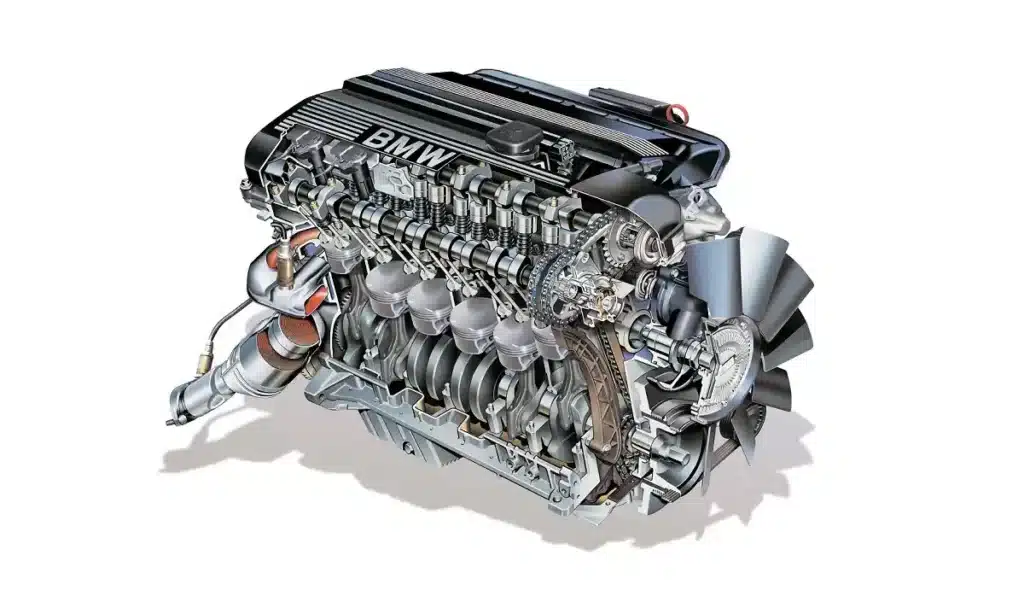
Cast from lightweight aluminum alloys, the M52 engines were lighter and introduced BMW’s VANOS technology. This innovative variable valve timing mechanism refined power delivery and improved fuel economy.
Within this celebrated family sits the M52B28, a 2.8-liter variant quickly known for its smooth power curve and impressive torque.
This engine was home in various BMW models, from the sporty Z3 roadster to the executive E39 5 Series. It was instrumental in establishing BMW’s reputation for producing performance-oriented vehicles without compromising on refinement or reliability.
The M52B28 distinguished itself with a balance of invigorating performance and everyday drivability. It became a favorite among enthusiasts for its tunability and the sheer pleasure it delivered behind the wheel. The engine’s broad application across the BMW range meant it appealed to a wide audience, successfully powering everything from compact coupes to spacious sedans.
The M52B28 was positioned as a mid-range powerhouse in the BMW lineup, offering a step up from the smaller displacement variants for those seeking more spirited performance. Yet, it remained a more accessible option than the high-performance M engines.
This made the M52B28 a versatile and popular choice in BMW’s engine selection, endearing it to a generation of drivers who valued the blend of performance and practicality.
M52B28 Engine Specs
The BMW M52B28 engine is a shining example of BMW’s expertise in creating smooth, high-performance engines. As part of the M52 family, the M52B28 features technical specifications that represent a blend of performance and efficiency, making it one of the most well-regarded engines of its time.
Technical specifications of the M52B28 engine:
- Displacement: 2.8 liters (2,793 cc, 170.44 cu-in)
- Configuration: Straight-six, four-stroke cycle
- Aspiration: Naturally aspirated
- Fuel Type: Gasoline
- Block Material: Cast-aluminum alloy with Nikasil-coated cylinder liners
- Head Material: Aluminum
- Valvetrain: Chain-driven double overhead camshafts (DOHC), 24 valves total
- Compression Ratio: 10.2:1
- Redline: 6,500 rpm
- Maximum Horsepower: 193 PS (142 kW; 190 HP) at 5,300 rpm
- Peak Torque: 280 N·m (28.6 kg·m, 206.4 ft·lb) at 3,950 rpm
- Bore x Stroke: 84.0 mm x 84.0 mm (3.31 in x 3.31 in)
- Engine Management: Siemens MSS50/1 DME with single VANOS
With equal bore and stroke, this square engine was designed to balance high-end power and low-end torque. The M52B28 stood out for its broad powerband and linear acceleration, making it a versatile powerplant for various driving styles and conditions.
Comparison to Other Variants in the M52 Series
Within the M52 series, there were several variants, including the smaller M52B20 and M52B25 engines. The M52B28, with its larger displacement, provided a noticeable increase in power and torque over these variants.
For instance, the M52B25, with a 2.5-liter displacement, produced 170 PS (125 kW; 168 HP), which was significantly less than the 190 HP output of the M52B28.
As the most potent non-turbocharged member of the M52 family, the M52B28 was often the engine of choice for drivers looking for the best combination of power, responsiveness, and refinement without stepping into the more expensive M-powered models.
Origins of the M52 Engine Family
The BMW M52 engine family, introduced in 1994, marked a significant evolution in BMW’s approach to engine design. Building on the legacy of the M50 series, the M52 responded to the increasing demand for more efficient and cleaner engines.
Adopting an aluminum block over the M50’s iron block was revolutionary, reducing the engine’s weight and improving vehicle handling and fuel efficiency.
The M52B28, debuting in 1995, was a testament to BMW’s commitment to progressive engineering. It carried a displacement of 2.8 liters and was the largest in the M52 family before introducing the M52TU update. This powerplant benefited from several enhancements that distinguished it from its siblings and predecessors.
Furthermore, the M52B28 utilized a more sophisticated engine management system that allowed for finer control of the ignition and fuel injection processes, contributing to the overall smoothness and responsiveness for which the engine is known.
BMW also incorporated a dual resonance intake system, which adjusted the length of the intake runners depending on engine speed, optimizing airflow and enhancing performance at both low and high RPMs.
Throughout its development, the M52B28 was continually refined. In later models, BMW engineers focused on improving reliability and longevity, leading to updates in the cooling system, reinforced bearing shells, and a switch to a steel-lined aluminum block to address earlier concerns over cylinder wear.
The M52B28’s blend of advanced technology and classic BMW engineering principles resulted in an engine that was both a performer and a reliable power source, securing its place in the pantheon of BMW’s iconic engines.
Engine Performance
The BMW M52B28 engine’s performance characteristics are a harmonious blend of spirited power and silky-smooth operation. Renowned for its linear power delivery, the M52B28 has been a favorite among BMW enthusiasts for its ability to provide a thrilling driving experience without sacrificing comfort or drivability.
Horsepower and Torque Outputs
At the heart of the M52B28’s performance is its output of 193 horsepower (142 kW; 190 HP) at 5,300 rpm. This power figure, combined with the peak torque of 280 N·m (206.4 ft·lb) at 3,950 rpm, ensures the engine delivers robust performance throughout a wide rev range.
The engine’s design facilitates a flat torque curve, which means that the power delivery is consistent and predictable, providing a strong pull from low rpm and continuing to surge forward as the needle climbs the tachometer.
Acceleration and Top-Speed Capabilities
The M52B28’s impressive torque allows for brisk acceleration, capable of propelling BMW models from a standstill to 60 mph in the mid-7-second range, depending on the vehicle’s weight and transmission.
The quarter-mile times are equally respectable, with many M52B28-powered cars achieving it in about 15 seconds, showcasing the engine’s proficiency in both short sprints and high-speed cruising.
The engine’s top speed capabilities are often electronically limited to 155 mph in many models; however, without such limitations, the M52B28 has the potential to push even further, a testament to its well-rounded performance profile.
Drivers of vehicles equipped with the M52B28 praise the engine for its smoothness, even at high speeds, which is a result of BMW’s meticulous balance of the rotating assembly and the engine’s innate design qualities.
Whether it’s navigating tight corners or stretching its legs on the autobahn, the M52B28 provides an engaging and exhilarating experience behind the wheel, making it a quintessential representative of BMW’s driving ethos.
Design and Construction
The BMW M52B28 engine is a paragon of the meticulous design and robust construction for which BMW is renowned. This engine showcases BMW’s commitment to precision engineering and high-quality materials, ensuring both performance and durability.
Cylinder Block and Head Materials and Design
The M52B28 features a cylinder block cast from aluminum alloy, which provides an excellent balance between strength and lightness. This material choice contributes to reducing the vehicle’s weight, improving handling and fuel efficiency.
The block is designed with Nikasil-coated cylinder liners, which offer superior wear resistance and longevity compared to traditional iron liners. The use of this coating also improves heat dissipation, helping to maintain optimal operating temperatures.
The cylinder head, also cast from aluminum, is designed to accommodate four valves per cylinder, optimizing airflow and fuel delivery into the combustion chamber. This multi-valve design enhances the engine’s breathing abilities, thereby increasing efficiency and power output.
Piston, Ring, and Connecting Rod Details
The pistons are carefully engineered within the engine to withstand high pressures and combustion temperatures. They are fitted with high-strength rings that maintain excellent compression and reduce oil consumption. These rings also play a critical role in transferring heat from the piston to the cylinder wall, further aiding in temperature management.
The connecting rods connect the pistons to the crankshaft and are constructed to endure the stresses of high-speed engine operation. They are robust yet lightweight, minimizing the reciprocating mass and allowing the engine to rev freely and smoothly.
Camshafts and Valve Train Configuration
The M52B28’s valve train is driven by dual overhead camshafts (DOHC), which control the timing of the 24 valves. The camshafts are chain-driven, ensuring reliable and precise timing over the engine’s life.
The valve train components are designed for minimal friction and wear, contributing to the engine’s quiet operation and longevity. Hydraulic valve lifters automatically maintain valve clearance, eliminating the need for periodic adjustments and reducing maintenance.
Advanced Features
The BMW M52B28 engine, a product of advanced engineering and innovation, has several key features that have solidified its status as a technologically sophisticated powerplant.
VANOS (Variable Valve Timing) Technology
At the forefront of the M52B28’s advanced features is the VANOS system, BMW’s proprietary variable valve timing technology. This system dynamically adjusts the valves’ timing by altering the camshafts’ position based on engine speed and load. The result significantly improves torque and horsepower across a wide RPM range, leading to a more responsive throttle and smoother power delivery.
Additionally, VANOS contributes to the engine’s fuel efficiency and reduces harmful emissions, as it optimizes the combustion process for varying driving conditions.
The M52B28 utilizes a single VANOS system, so the intake and exhaust camshaft timings are adjustable. This dual adjustment capability allows for an even greater degree of precision in controlling the engine’s breathing, further enhancing performance and drivability.
OBD-II Compliance and Emissions Control
Another significant feature of the M52B28 is its compliance with OBD-II (On-Board Diagnostics II) standards, the second-generation diagnostic system mandated for all vehicles sold in the United States from 1996 onwards. OBD-II monitors the performance of various engine and emission control systems and alerts the driver to any malfunctions or deviations from standard operating conditions. This system is integral to the vehicle’s ability to self-diagnose issues, facilitating easier and more efficient repairs.
Moreover, the M52B28 engine incorporates various emissions control technologies, including a sophisticated engine management system that precisely controls fuel injection and ignition timing to minimize exhaust emissions.
The catalytic converter, an essential component of the exhaust system, is pivotal in reducing the engine’s environmental impact by converting harmful pollutants into less harmful emissions before they exit the exhaust.
Together, these advanced features reflect BMW’s dedication to creating engines that are not only powerful and enjoyable to drive but also environmentally responsible and user-friendly. The M52B28’s integration of VANOS and OBD-II compliance exemplifies the brand’s forward-thinking approach to automotive design, ensuring the engine’s legacy as a benchmark in its era.
Fuel System
The BMW M52B28 engine has a sophisticated fuel system designed to deliver precise fuel injection and optimal fuel efficiency. This system’s meticulous calibration ensures that the engine operates at peak performance while maintaining responsible fuel consumption rates.
At the heart of the M52B28’s fuel system is a multi-point fuel injection technology. Each cylinder is served by its fuel injector, which is electronically controlled to deliver the exact amount of fuel required for combustion. This precision allows for a more complete burn of the fuel-air mixture, increasing efficiency and power while reducing wasteful emissions.
The M52B28 also benefits from BMW’s continuous development in fuel delivery systems. The engine employs a returnless fuel supply system, which reduces the amount of heated fuel returned to the tank, ensuring a cooler and denser fuel charge enters the combustion chamber. This contributes to better performance and reduced vapor emissions.
Fuel Efficiency and Consumption Rates
Regarding fuel efficiency, the M52B28 engine is a product of its era, balancing performance with the fuel economy expectations of the late 1990s. Under normal driving conditions, vehicles equipped with the M52B28 engine can achieve a respectable mileage, which, for its displacement and performance output, stands as a testament to BMW’s engineering.
The actual fuel consumption rates can vary based on driving habits, maintenance standards, and the condition of the vehicle. On average, owners can expect to see figures that reflect a blend of city and highway driving conditions.
Drivers who adhere to a smooth, consistent driving style and properly maintain their vehicle — including regular service of the fuel system components — can expect to get the most favorable fuel consumption rates from their M52B28 engine.
Ignition System
The BMW M52B28 engine’s ignition system is a critical component of its smooth operation and performance. This system ensures reliable starting and optimal combustion at all engine speeds.
Spark Plugs and Gap Settings
At the core of the ignition system are the spark plugs, which are responsible for igniting the air-fuel mixture within the combustion chamber. The M52B28 engine utilizes high-quality spark plugs that are specifically designed to handle its high efficiency and performance demands.
The correct spark plug gap setting is crucial as it directly affects engine performance; too narrow of a gap may lead to misfires, while too wide can lead to a weak spark and poor combustion. The BMW M52B28 engine spark plug gap is 0.030 inches (0.76 mm). The recommended gap settings for the M52B28 should be adhered to, ensuring that the spark generation is optimal for the engine’s operating conditions.
Ignition Coils and Firing Order
The ignition coils in the M52B28 engine transform the battery’s low voltage into the thousands of volts needed to create an electric spark in the spark plugs to ignite the fuel. Each cylinder has its own coil, a direct coil-on-plug system, which reduces electrical losses and ensures a strong and precise spark at exactly the right time.
The firing order, which is the sequence in which each cylinder fires, is carefully engineered to balance the engine’s power delivery and minimize vibrations. For the M52B28, the firing order is 1-5-3-6-2-4.
This specific sequence contributes to the smoothness for which BMW engines are known, as it helps in evenly distributing the firing forces across the engine block and crankshaft, resulting in less stress and more uniform power output.
Proper maintenance of the ignition system, including regular checks and replacements of the spark plugs and coils, is vital for maintaining the engine’s performance and fuel efficiency. When these components are in good working order, the M52B28 engine delivers powerful, responsive acceleration and operates with the refined smoothness expected from a premium BMW engine.
Lubrication System
The lubrication system of the BMW M52B28 engine plays a pivotal role in ensuring the longevity and performance of the engine by reducing friction, cooling engine components, and protecting against wear.
Oil Capacity and Recommended Oil Types
The M52B28 engine has an oil capacity of approximately 6.5 liters (6.9 quarts), including the filter. This capacity is designed to ensure a sufficient quantity of oil circulates through the engine, maintaining lubrication even under demanding conditions. It’s imperative to use the oil type recommended by BMW to preserve engine life and efficiency.
BMW specifies a fully synthetic oil for the M52B28, typically with a viscosity rating of 5W-30 or 5W-40, compliant with BMW’s Longlife-01 specification.
This high-quality synthetic oil is formulated to withstand the engine’s high operating temperatures, provide a stable lubricating film, and offer protection during cold starts and high-temperature operation.
Oil Change Intervals
BMW traditionally recommended oil change intervals of approximately 15,000 miles for the M52B28 under normal driving conditions.
However, many BMW specialists and enthusiasts advocate for shorter intervals of 7,500 to 10,000 miles to ensure optimal engine health, particularly as the engine ages or if it’s subjected to more demanding driving conditions such as frequent short trips, extended idling, or high-performance driving.
Adherence to these shorter intervals can help to prevent the buildup of contaminants and degradation of oil properties, which can lead to premature wear.
Importance of Lubrication
Lubrication is critical to the health of any engine, and the M52B28 is no exception. The primary function of the engine oil is to create a thin film between moving parts, reducing direct metal-to-metal contact and the resulting friction. This not only prevents excessive wear but also helps to dissipate heat, as a significant amount of an engine’s cooling is accomplished through oil circulation.
Additionally, engine oil serves as a medium for suspending and transporting contaminants to the oil filter, where they can be removed from circulation. Over time, the oil’s additives that neutralize acids and provide cleaning properties will become depleted, which is why regular oil changes are essential for maintaining engine health.
Cooling System
The cooling system of the BMW M52B28 engine is meticulously engineered to maintain optimal operating temperatures, which is crucial for ensuring the engine’s performance and longevity.
Engine Coolant Specifications
BMW recommends using a specific type of antifreeze for the M52B28 engine, typically a 50/50 mix of high-quality ethylene glycol-based coolant and distilled water. This mixture not only prevents freezing in cold temperatures but also raises the boiling point of the coolant, allowing it to absorb and dissipate heat from the engine efficiently.
It also includes additives that protect against corrosion, scale, and rust, which can occur within the engine’s cooling passages and radiator. It’s important to use coolant that meets BMW’s specifications (such as BMW’s antifreeze/coolant or equivalent) to ensure proper cooling system function and component longevity.
Radiator and Thermostat Functionality
The radiator in the M52B28 cooling system is a large heat exchanger typically located at the front of the engine bay, where it can receive airflow as the vehicle moves forward. It is responsible for dissipating the heat absorbed by the coolant from the engine into the atmosphere.
Coupled with the radiator is the thermostat, a valve that regulates the coolant flow based on temperature. When the engine is cold, the thermostat remains closed, allowing the engine to warm up quickly. As the engine reaches operating temperature, the thermostat gradually opens to allow coolant to flow through the radiator, thereby controlling the engine temperature within a narrow optimal range.
If the thermostat or radiator fails, the engine can overheat, leading to potential damage. The health of the M52B28 engine must ensure these components are functioning correctly. Regular checks and maintenance of the cooling system, including the periodic replacement of coolant and inspection of the radiator and thermostat, can prevent overheating and maintain the engine’s performance.
In essence, the cooling system is as much a part of the M52B28’s performance as the engine itself. Proper care and maintenance of this system are paramount to ensuring the engine runs at its best, providing the power and reliability expected from a BMW.
BMW M52B28 Engine Problems And Reliability
The BMW M52B28 engine is celebrated for its performance and durability, yet like all mechanical systems, it can be prone to certain issues over time. Understanding these common problems and troubleshooting them can greatly extend the engine’s lifespan.
All problems are the same for every engine from the BMW M52 engine series. You can read about them here.
| Issue | Symptoms | Possible Causes | Common Fixes |
|---|---|---|---|
| Cooling System Failure | Overheating, coolant loss, steam from engine bay | Leaking radiator, malfunctioning thermostat, water pump failure | Replace radiator or thermostat, replace water pump |
| VANOS System Malfunction | Loss of power, poor idle, increased fuel consumption | Worn VANOS seals, solenoid failure | Rebuild VANOS with new seals, replace solenoids |
| Oil Leaks | Oil stains under the vehicle, burning oil smell | Valve cover gasket failure, oil filter housing leak | Replace valve cover gasket, reseal oil filter housing |
| Faulty Camshaft Position Sensor | Stalling, hesitation, starting issues | Sensor failure | Replace camshaft position sensor |
| Air Mass Meter (MAF) Failure | Rough idle, loss of power, poor acceleration | Dirty or failed MAF sensor | Clean or replace MAF sensor |
| Worn Out Spark Plugs | Misfiring, poor fuel economy, lack of power | Spark plug wear | Replace spark plugs |
| Intake System Leaks | Whistling noises, un-metered air entering the system | Cracked intake boots, leaking gaskets | Replace intake boots, reseal with new gaskets |
Diagnostic Tips and Common Fixes
Cooling System Failure
The cooling system in the M52B28 can sometimes be a point of concern, particularly regarding the water pump and thermostat. Diagnosing cooling system problems often starts with a pressure test to identify leaks. If overheating is a symptom, checking the radiator, thermostat, and water pump for proper operation is crucial. Replacing these components is a common remedy for cooling issues.
VANOS System Malfunction
If you encounter performance issues related to the VANOS system, the repair often involves replacing the seals or solenoids. Diagnostic scanners can often pinpoint VANOS-related fault codes, guiding the troubleshooting process.
Oil Leaks
Oil leaks commonly stem from the valve cover gasket and oil filter housing. Visual inspection can usually confirm the source of the leak. Replacement of the gaskets is the typical solution.
Faulty Camshaft Position Sensor
A failing camshaft position sensor can lead to a range of running issues. Using a diagnostic tool to read fault codes is the best initial step. If the sensor is at fault, replacement is generally straightforward and resolves the problem.
Air Mass Meter (MAF) Failure
The MAF sensor can become dirty or fail, leading to air-fuel mixture issues. Sometimes cleaning the sensor can restore functionality, but if it is faulty, replacement is necessary.
Worn Out Spark Plugs
Spark plugs are a regular maintenance item and when they wear out, they can cause misfiring and poor engine performance. Inspection and replacement according to the service interval is the best course of action.
Intake System Leaks
Leaks in the intake system can lead to a variety of running issues. Audible inspection for whistling noises and visual inspection for cracks can help identify problematic areas. Replacing faulty components like intake boots and resealing with new gaskets can resolve these leaks.
In troubleshooting the M52B28 engine, a methodical approach that begins with a diagnostic scan and visual inspection is key. Addressing these common issues promptly can help maintain the engine’s performance and prevent more significant problems in the future.
Maintenance and Care
Regular maintenance and proper care are vital to the longevity and performance of the BMW M52B28 engine. A disciplined approach to maintenance not only keeps the engine running smoothly but can also prevent costly repairs down the line.
Adhering to a regular maintenance schedule is essential for the health of the M52B28. Below is a guideline for the key maintenance tasks:
| Maintenance Item | Interval |
|---|---|
| Oil and Filter Change | Every 7,500 – 10,000 miles or once a year |
| Air Filter Replacement | Every 30,000 miles or as needed |
| Fuel Filter Replacement | Every 60,000 miles |
| Spark Plug Replacement | Every 60,000 miles |
| Coolant Flush | Every 2-3 years |
| Transmission Fluid Change (if applicable) | Every 60,000 miles |
| Differential Fluid Change | Every 60,000 miles |
| Brake Fluid Change | Every 2 years |
| Inspect Belts and Hoses | Every 30,000 miles |
| Check Suspension and Steering Components | Every 30,000 miles |
Sticking to this schedule helps ensure that the M52B28 operates efficiently and can identify potential issues before they escalate into serious problems.
Tips for Prolonging Engine Life
1. Warm Up the Engine Properly:
Before pushing the engine hard, allow it to reach operating temperature. This ensures the oil is properly circulated and components are adequately lubricated.
2. Use Quality Fluids and Parts:
Invest in high-quality engine oil, coolant, and replacement parts that meet or exceed OEM specifications. This can significantly extend the life of the engine.
3. Regularly Check Fluid Levels:
Between service intervals, periodically check the oil, coolant, and brake fluid levels. Top up as needed to prevent running low on vital fluids.
4. Address Leaks Promptly:
If you spot any leaks, address them immediately. Leaks can lead to low fluid levels and potential damage to the engine components.
5. Be Mindful of the Engine’s Operating Environment:
If you drive in harsh conditions, such as extreme temperatures or dusty areas, more frequent maintenance may be necessary.
6. Listen to Your Engine:
Pay attention to any unusual noises or changes in the engine’s performance. Early detection of issues can prevent further damage.
7. Keep It Clean:
Regularly clean the engine bay to remove dirt and debris affecting engine cooling and component lifespan.
8. Use the Correct Fuel:
Always use the recommended octane fuel. Lower octane fuels can cause knocking, damaging the engine over time.
9. Drive Responsibly:
Avoid aggressive driving behaviors like hard accelerations and revving the engine unnecessarily. Smooth driving habits contribute to the engine’s longevity.
10. Keep Records:
Maintain a detailed record of all maintenance and repairs. This not only helps in keeping track of scheduled services but also adds value to your vehicle if you decide to sell.
Engine Upgrades and Tuning
The BMW M52B28 engine, renowned for its robust design and performance potential, is a popular choice among enthusiasts looking to extract more power and improve driving dynamics through various upgrades and tuning.
Popular Performance Upgrades
1. ECU Tuning:
Reprogramming the Engine Control Unit (ECU) can unleash additional horsepower and torque that are otherwise restricted in the stock setup. ECU tunes can alter fuel maps, ignition timing, and VANOS timing for optimized performance.
2. Intake and Exhaust Modifications:
Replacing the stock air intake with a high-flow cold air intake system can improve the engine’s breathing efficiency. Similarly, upgrading to a performance exhaust system can reduce backpressure and enhance exhaust flow, contributing to power gains.
3. Camshaft Upgrades:
Installing performance camshafts with more aggressive profiles can significantly increase power, especially in the higher RPM range.
4. Forced Induction:
Adding a turbocharger or supercharger kit is a more involved modification that can drastically increase the M52B28’s power output.
5. Lightweight Pulleys:
Using lightweight pulleys reduces rotational mass, freeing up power and improving throttle response.
6. Performance Cooling System:
Upgrading the radiator, and water pump and installing an oil cooler can help maintain optimal operating temperatures during high-performance driving.
Impact of Tuning on Engine Dynamics
Tuning the M52B28 can have a profound impact on the engine’s dynamics. ECU tuning, for instance, not only improves power output but can also enhance the throttle response and refine power delivery across the rev range. Intake and exhaust modifications can alter the engine note, providing a more aggressive sound that many enthusiasts desire.
However, it’s crucial to note that while tuning can increase performance, it can also put additional strain on the engine and other drivetrain components. It’s essential to ensure that the engine is in good health before undertaking any serious upgrades and to consider strengthening the transmission and driveline to handle the increased power.
Additionally, modifications should comply with local emissions regulations to avoid legal issues.
For more detailed information on specific upgrades and tuning options for the M52B28, check out these external resources:
Real-World Ownership
Owning a BMW with an M52B28 engine can be a rewarding experience for those who appreciate precision engineering and spirited driving dynamics. However, real-world ownership involves a careful balance between enjoying the performance and managing the maintenance that ensures long-term reliability.
Long-Term Reliability and Running Costs
The M52B28 is generally considered a reliable engine when well-maintained. Regular servicing, as per BMW’s guidelines, is paramount to ensuring its longevity.
Owners should budget for the slightly higher costs associated with maintaining a premium German engine, including the use of high-quality lubricants, replacement parts, and potential repairs associated with common issues like cooling system components and VANOS units.
Running costs can be moderated by adhering to a proactive maintenance schedule, opting for independent BMW specialists for servicing, and using aftermarket parts where appropriate without compromising quality. Fuel costs are also a consideration, with the M52B28 preferring premium gasoline for optimal performance and efficiency.
Owner Experiences and Community Resources
The BMW community is robust and active, with a wealth of knowledge shared by M52B28 owners. Forums such as Bimmerfest and Bimmerforums provide platforms for owners to discuss issues, share solutions, and celebrate the joys of BMW ownership.
Local BMW clubs and online groups can be invaluable resources, offering advice and camaraderie. These communities often organize events and meetups, allowing owners to exchange stories and insights about their vehicles.
Ownership stories commonly praise the M52B28 for its smooth power delivery and durability, especially when maintenance advice is followed.
However, there is also an acknowledgment of the need for a contingency fund for the occasional unexpected repair, a common sense approach for any enthusiast car ownership.
FAQs about the BMW M52B28 Engine
Q: What is the typical lifespan of the M52B28 engine?
A: With proper maintenance, the M52B28 engine can exceed 200,000 miles. Some well-maintained units have been known to reach 300,000 miles without major internal repairs.
Q: Are there any common issues with the M52B28 engine?
A: Yes, some known issues include cooling system components failing (like the water pump and thermostat), VANOS unit wear, oil leaks (often from the valve cover gasket or oil filter housing), and the potential for cracked intake boots leading to air leaks.
Q: How often should I change the oil in my M52B28 engine?
A: BMW originally recommended oil change intervals of up to 15,000 miles, but many enthusiasts and experts suggest a more frequent interval of 7,500 to 10,000 miles to ensure engine longevity.
Q: What type of oil does the M52B28 engine require?
A: The M52B28 engine requires fully synthetic oil, typically with a viscosity of 5W-30 or 5W-40, compliant with BMW’s Longlife-01 specification.
Q: Is the M52B28 engine an interference engine?
A: Yes, the M52B28 is an interference engine, meaning that if the timing chain fails, there is a high likelihood of significant engine damage due to contact between valves and pistons.
Q: Can the M52B28 engine use regular unleaded gasoline?
A: While the engine can technically run on regular unleaded, premium fuel is recommended to achieve optimal performance and fuel efficiency and to prevent potential knocking and long-term damage.
Q: What are the signs of a failing VANOS unit on the M52B28?
A: Symptoms of a failing VANOS unit include a loss of power, especially at low RPMs, rough idling, and increased fuel consumption. You may also hear a rattling noise from the front of the engine.
Q: How can I improve the performance of my M52B28 engine?
A: Performance can be improved through various upgrades such as ECU tuning, intake and exhaust modifications, camshaft upgrades, and in some cases, adding forced induction systems like turbochargers.
Q: Is it expensive to maintain an M52B28 engine?
A: Maintenance costs can be higher than average due to the quality of parts and fluids recommended. However, these costs can be mitigated by following a stringent maintenance schedule and addressing issues promptly.

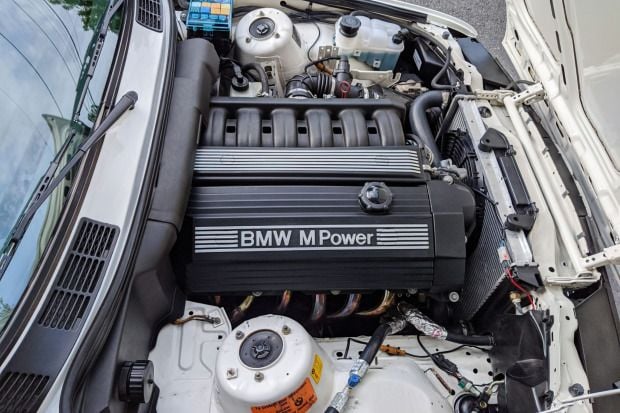
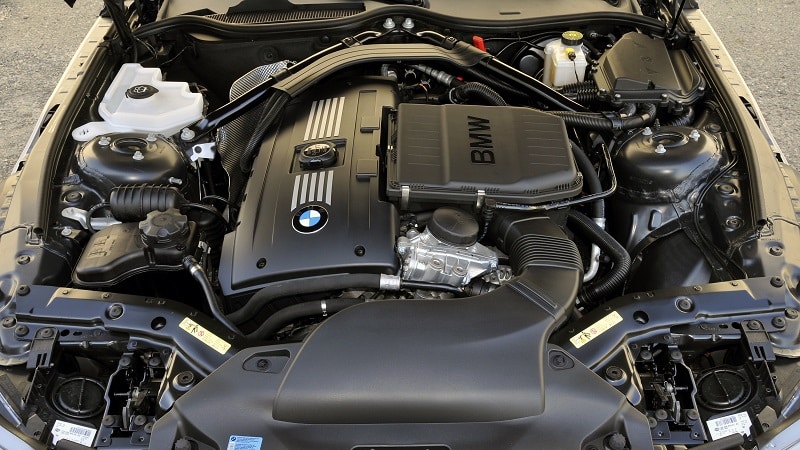
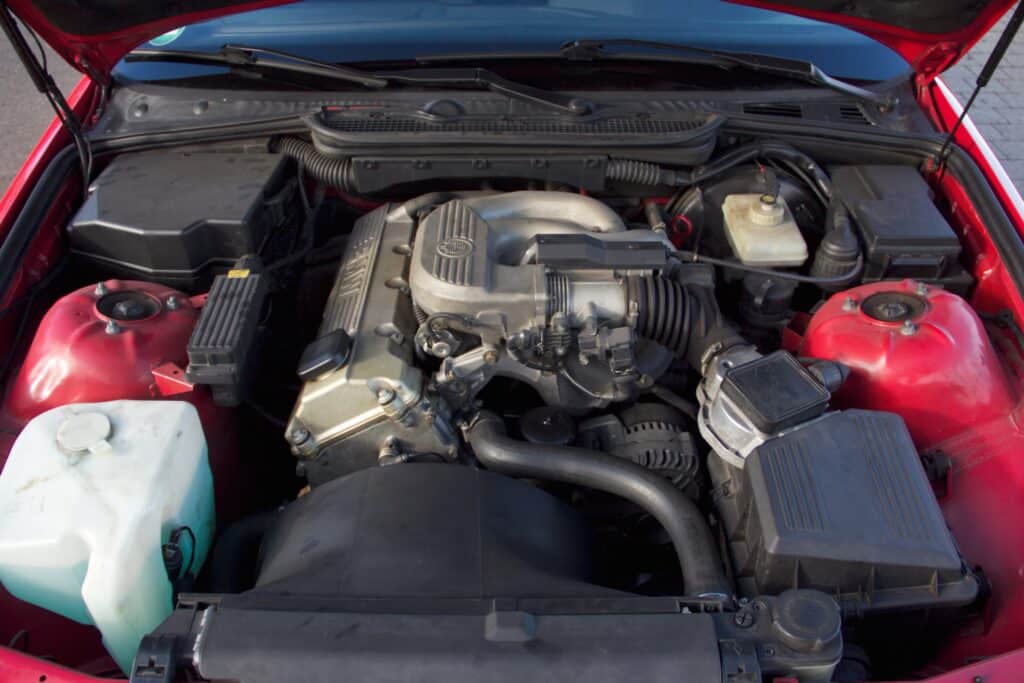
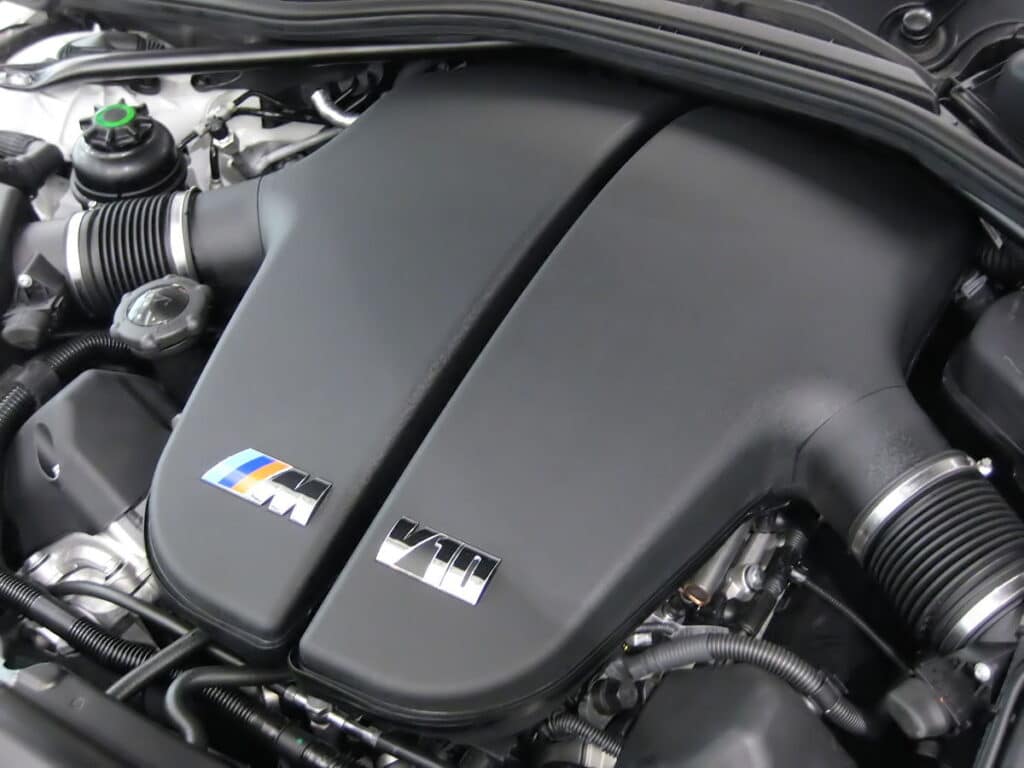
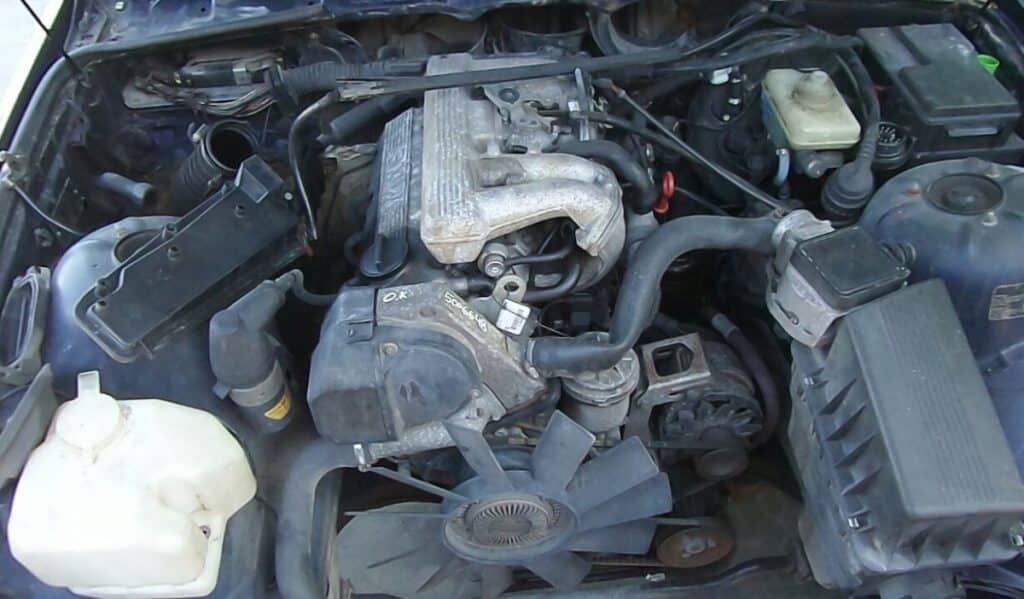
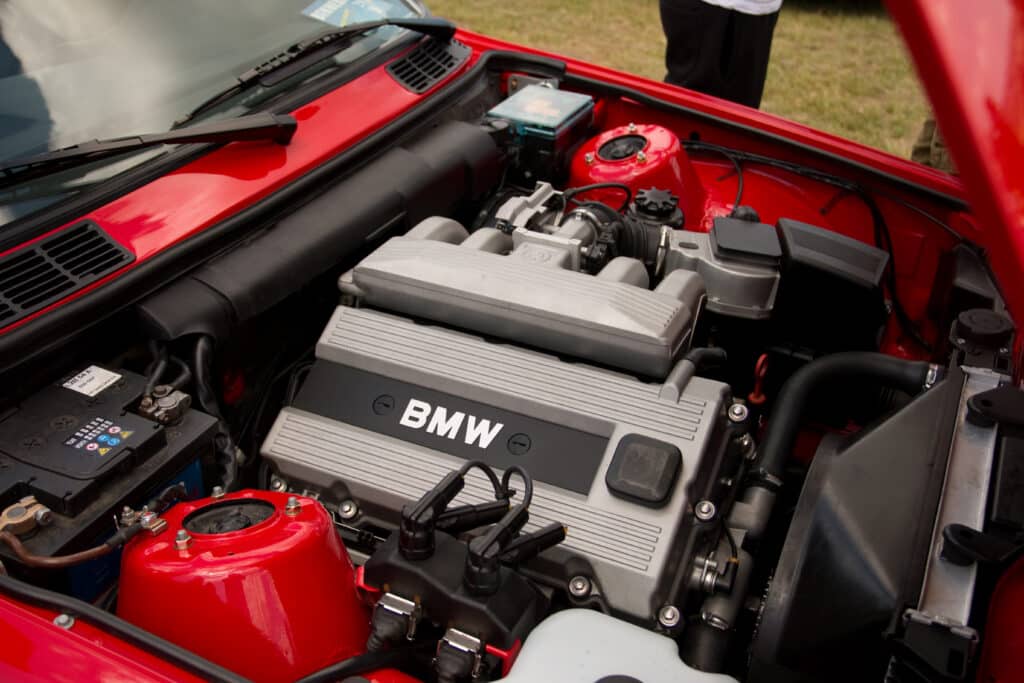
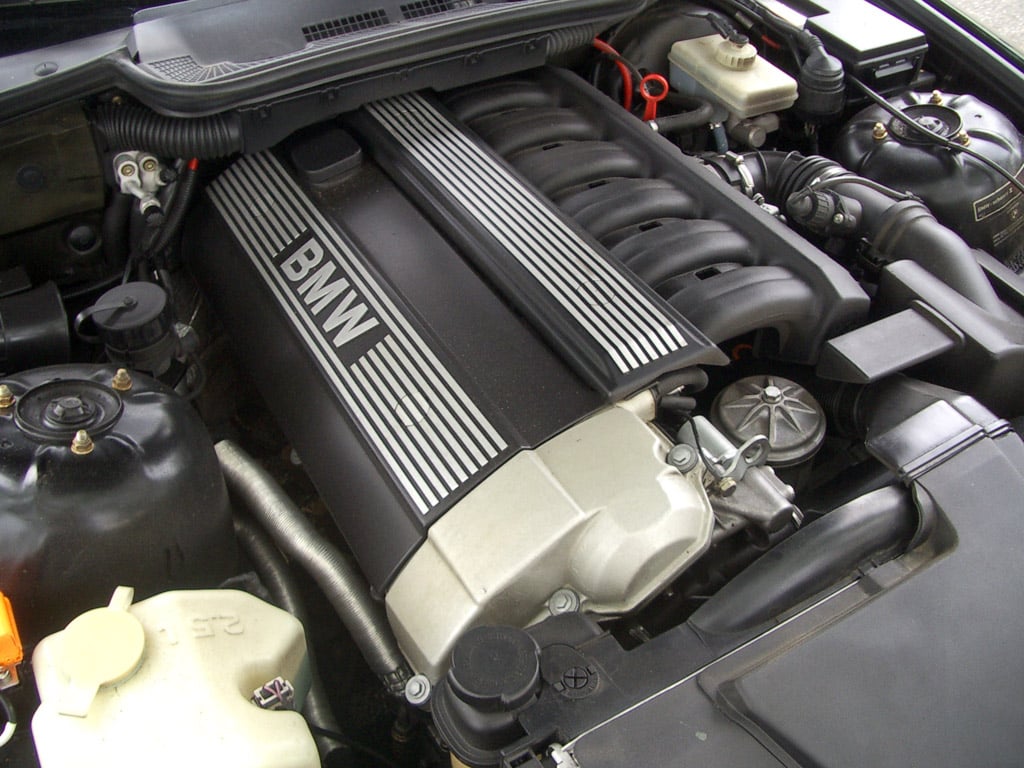
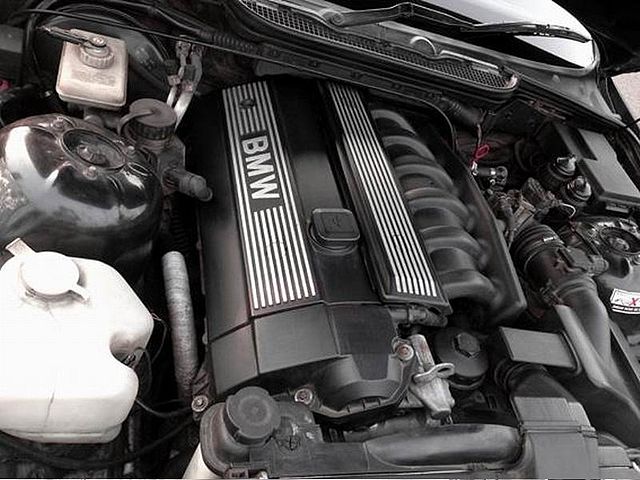
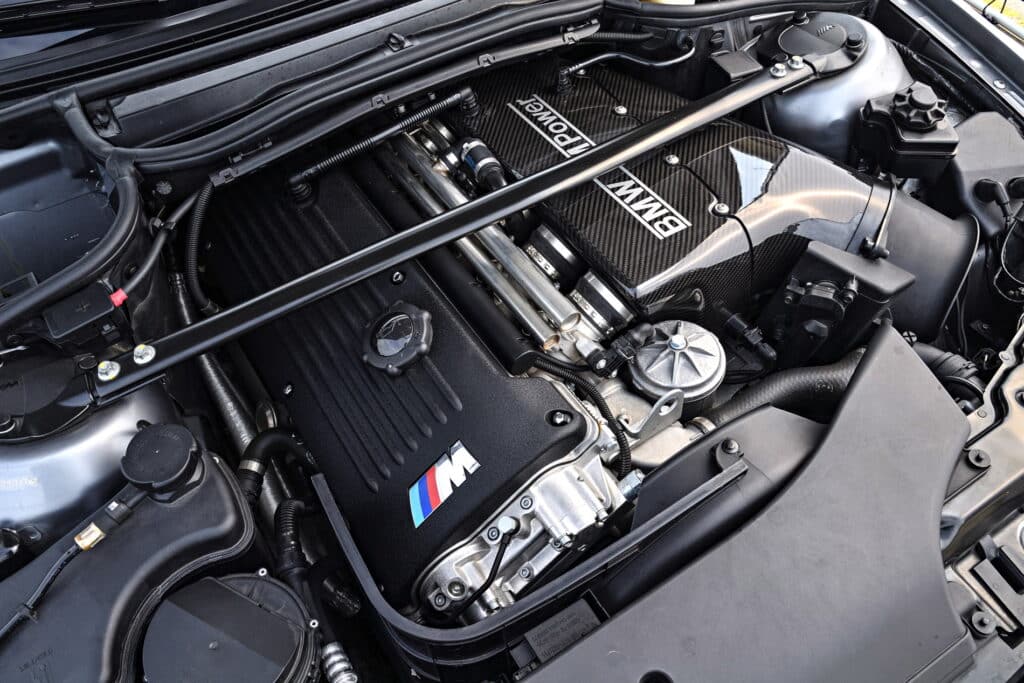

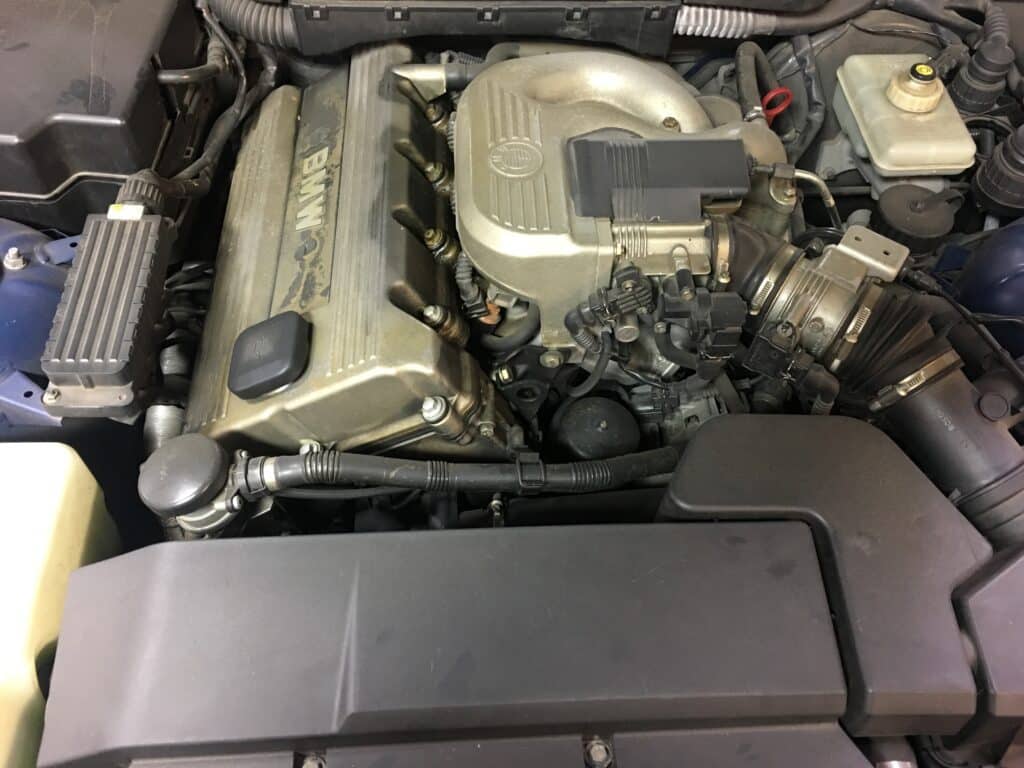
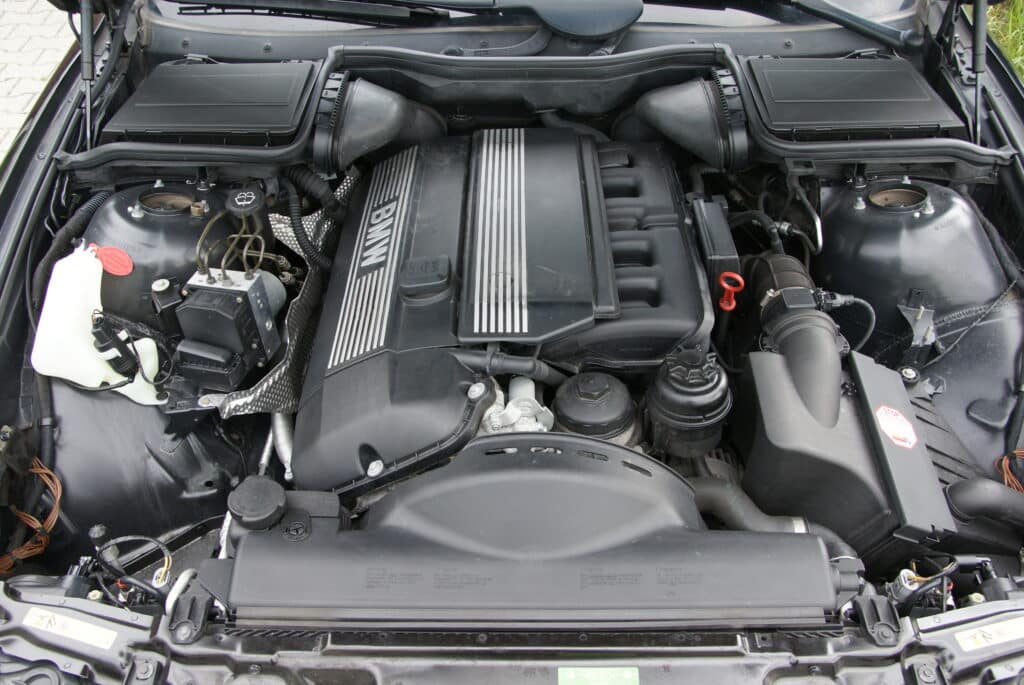
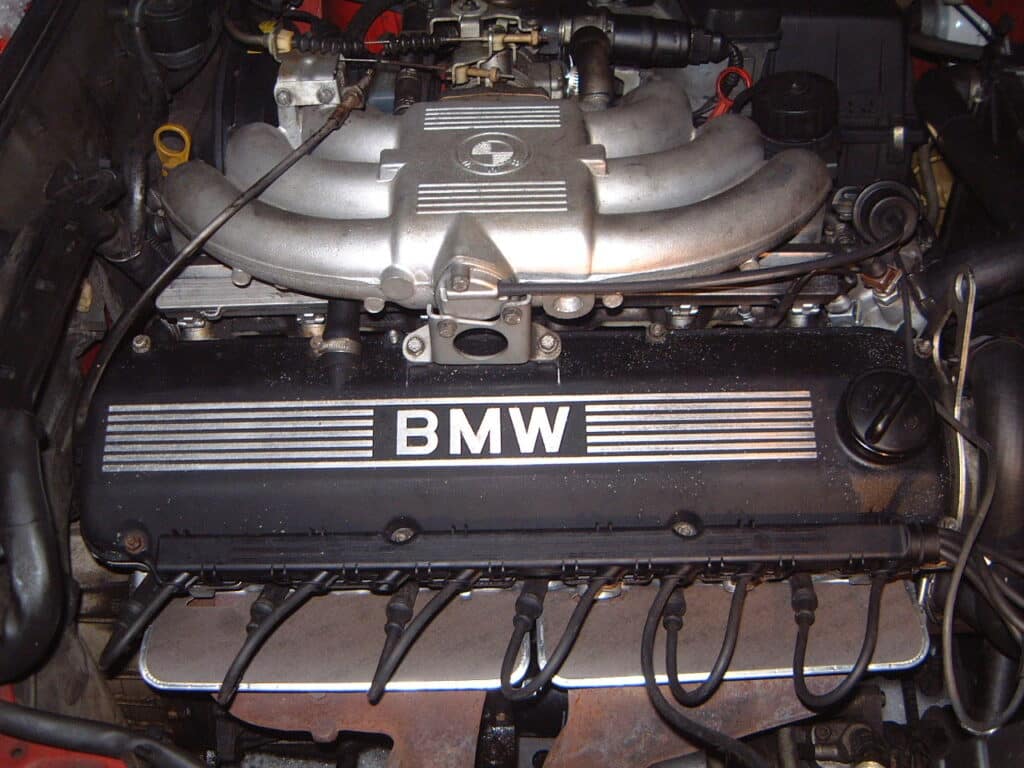

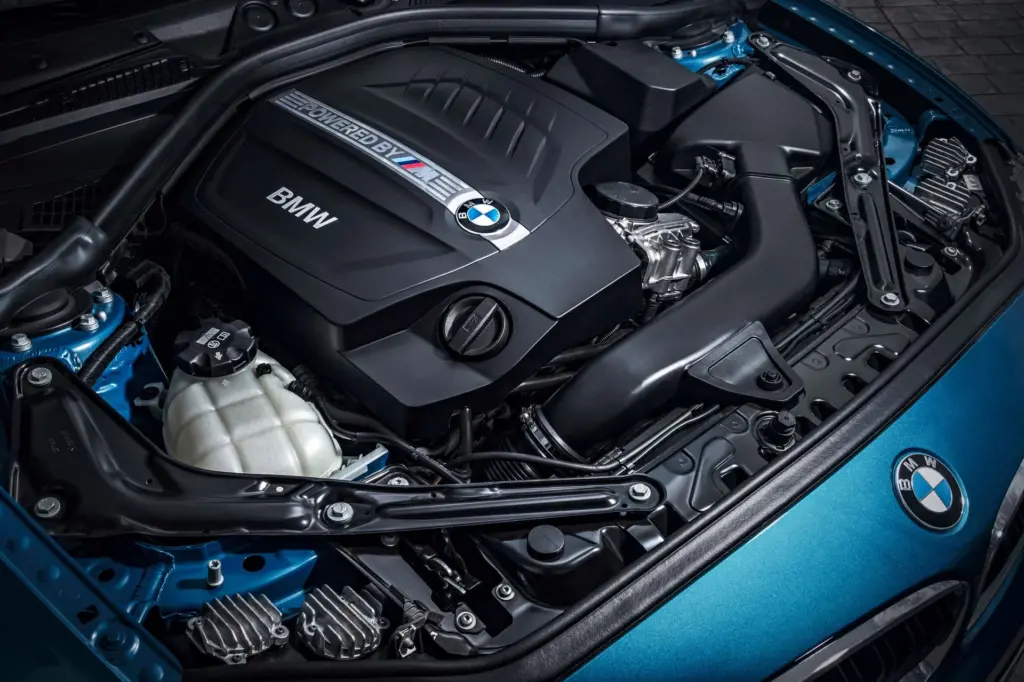
The M52Bxx still had the Single VANOS , whereas the M52TUBxx introduced the Double VANOS!
100% true!